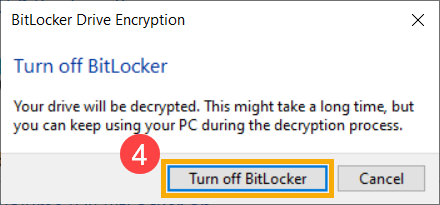Related Topics
[Windows 11/10] Introduction to Device Encryption and Standard BitLocker Encryption
Device encryption helps protect your data, and it's available on a wide range of Windows devices. If you turn on device encryption, the data on your device can only be accessed by people who've been authorized. If device encryption isn't available on your device, you may be able to turn on standard BitLocker encryption instead.
Note: Device encryption protects with BitLocker device encryption, and the BitLocker key will automatically back up to your Microsoft account after completing Device encryption. For more details, please refer to Overview of BitLocker Device Encryption in Windows. To find your BitLocker key in your Microsoft account please refer to https://www.asus.com/support/FAQ/1042922.
Please go to the corresponding instruction based on the current Windows operating system on your computer:
- To see if you can use device encryption
- Turn on device encryption
- Turn off device encryption
- Standard BitLocker encryption
- Turn off BitLocker encryption
To see if you can use device encryption
- Type and search [System Information] in the Windows search bar①, then click [Run as administrator]②.
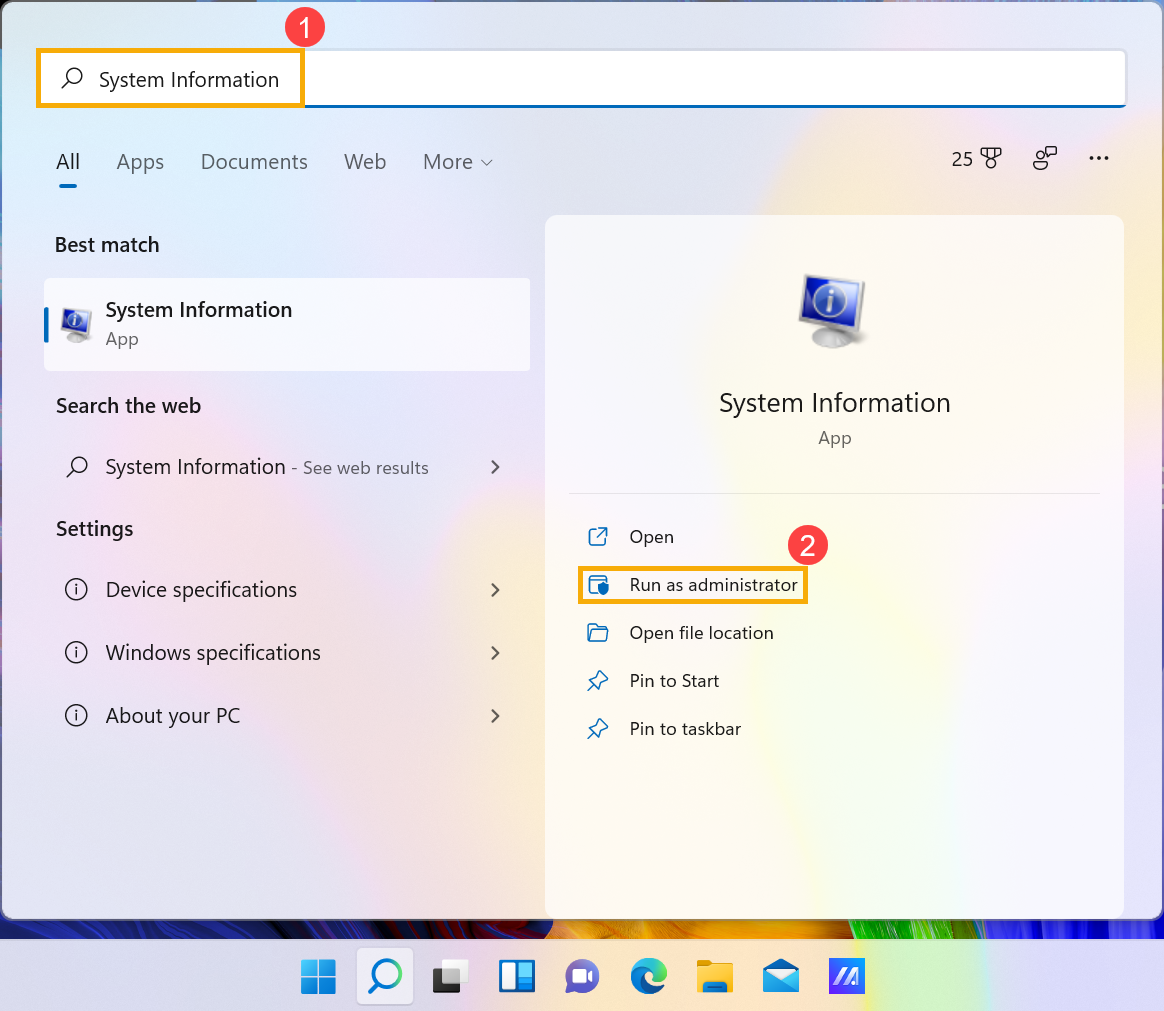
- At the bottom of the System Information window, find [Device Encryption Support]③. If the value says [Meets prerequisites]④, then device encryption is available on your device. If it isn't available, you may be able to use standard BitLocker encryption instead.
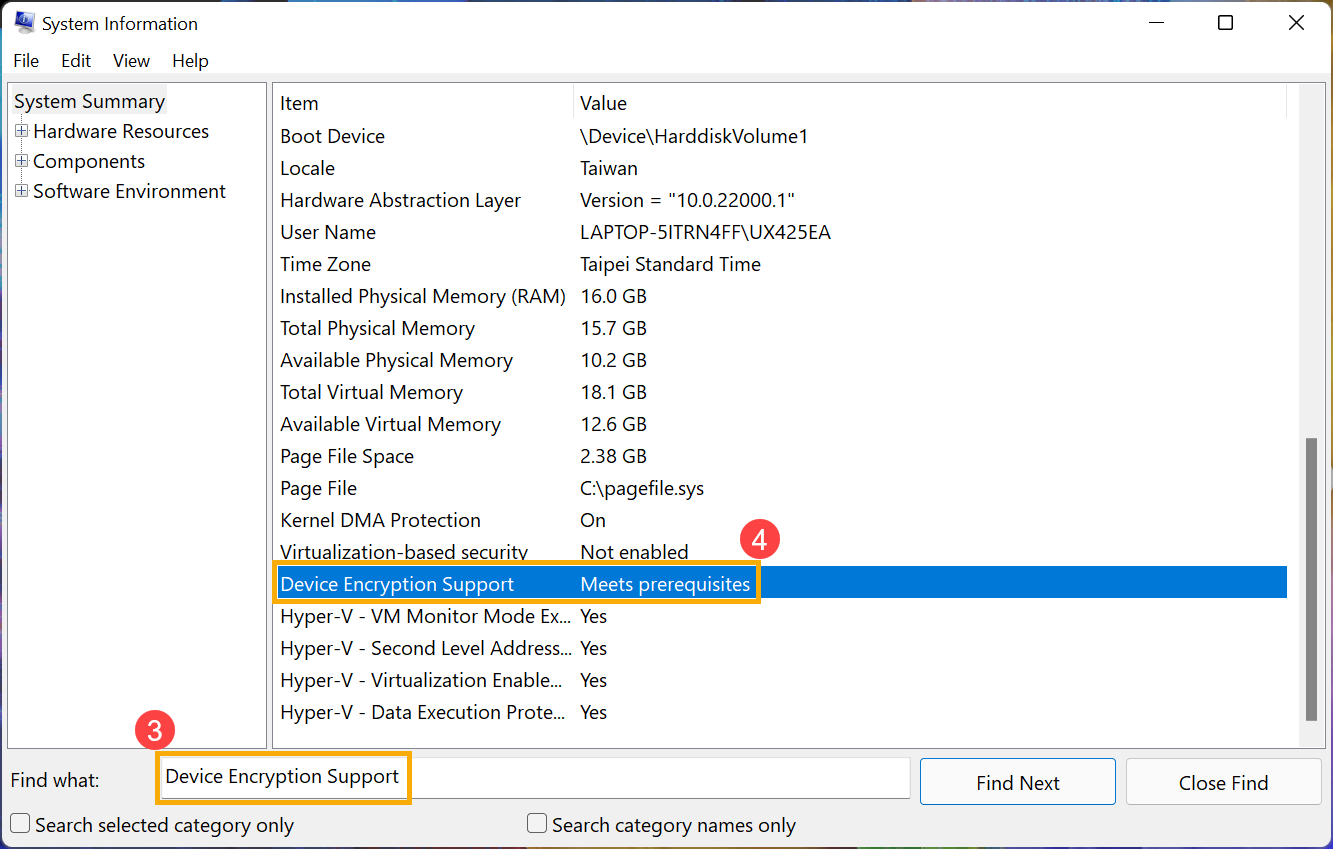
- Type and search [Device encryption settings] in the Windows search bar①, then click [Open]②.
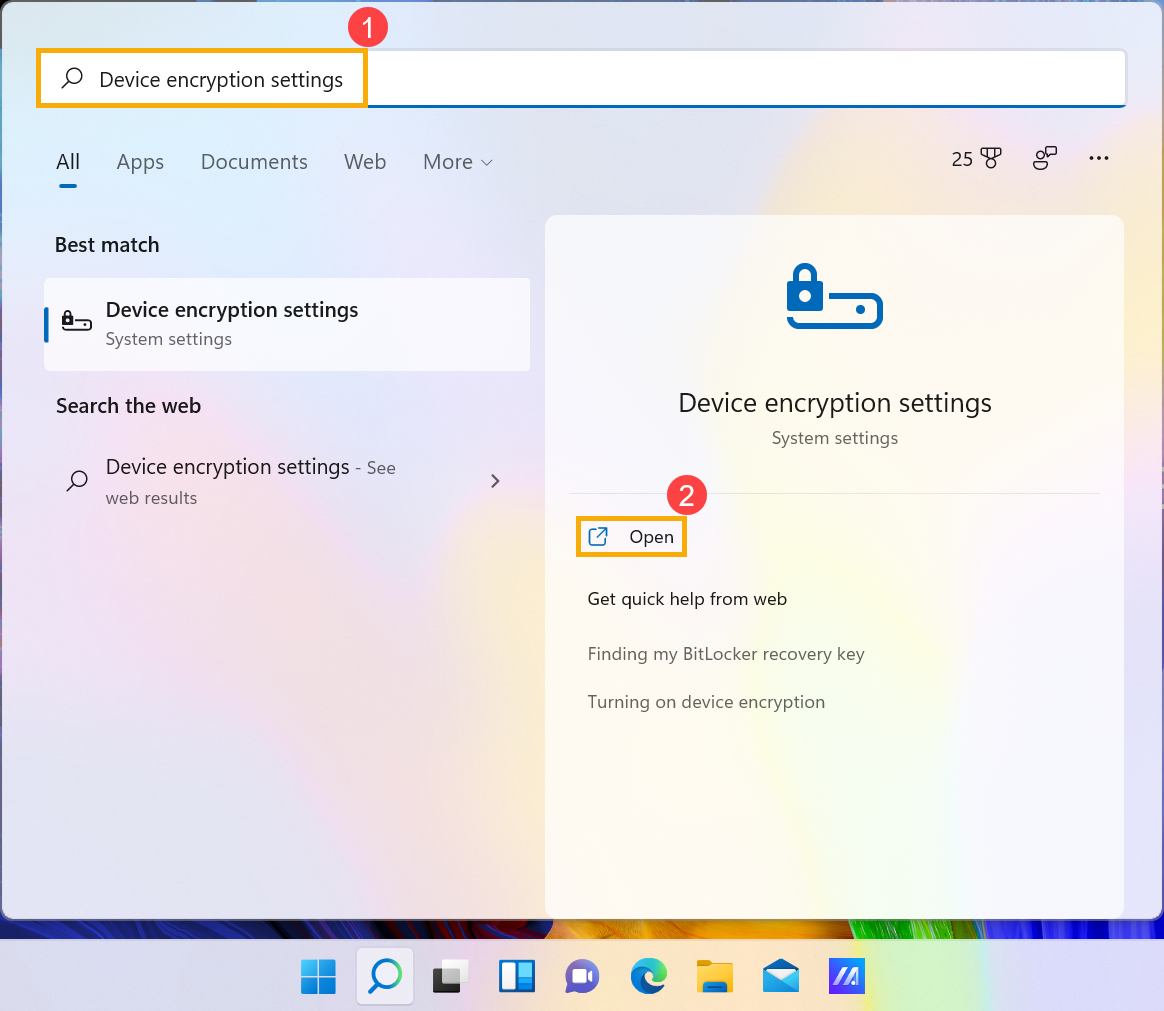
- Some models may turn on the device encryption feature as a default setting. If you have signed in with your Microsoft account, then the device encryption is finished on your device.
If you don’t sign in with your Microsoft yet, please ensure Device encryption is On③, then select [Sign in]④.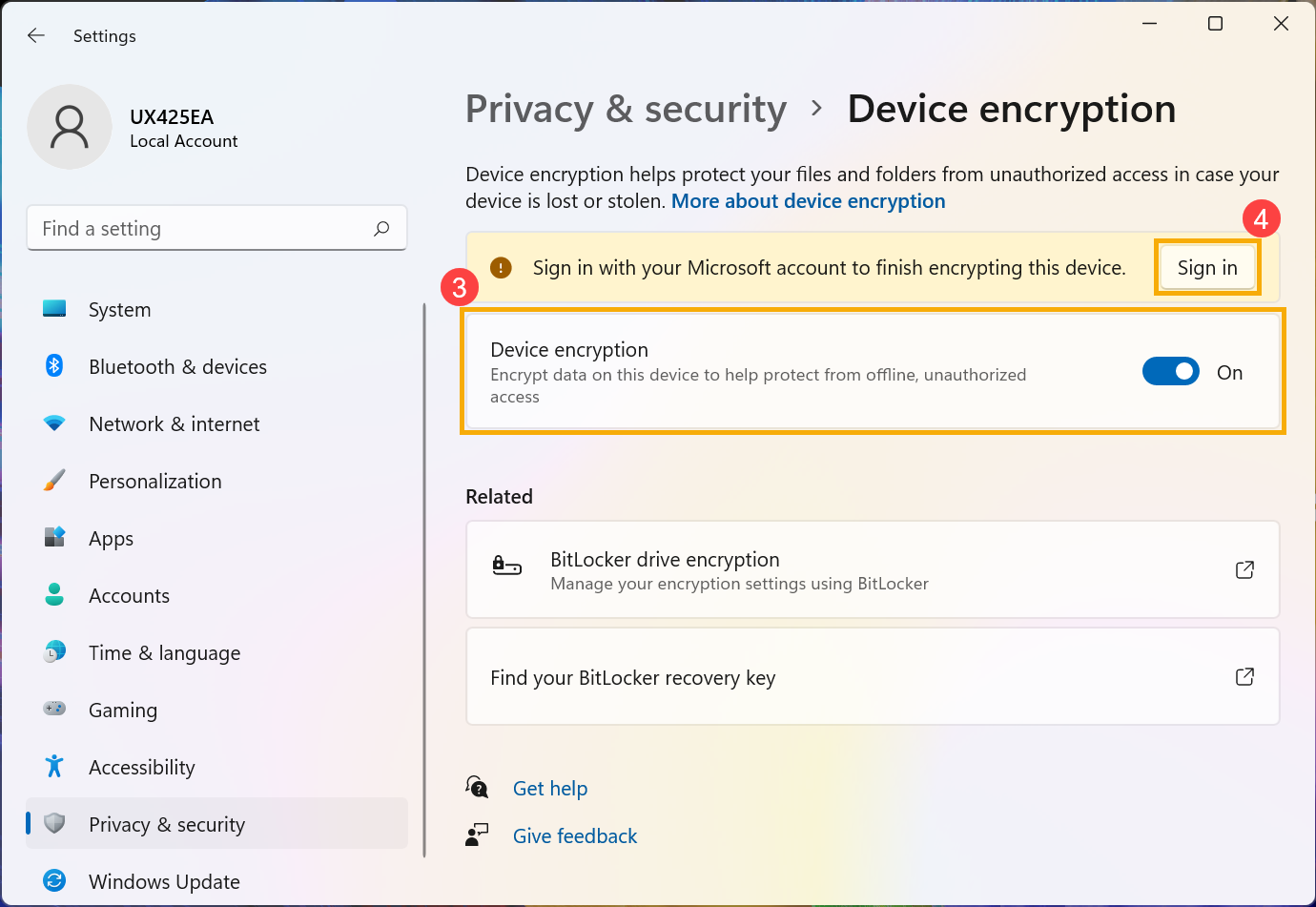
- Enter the Your info setting, please click [Sign in with a Microsoft account instead]⑤. Here you can learn more about Microsoft account introduction.
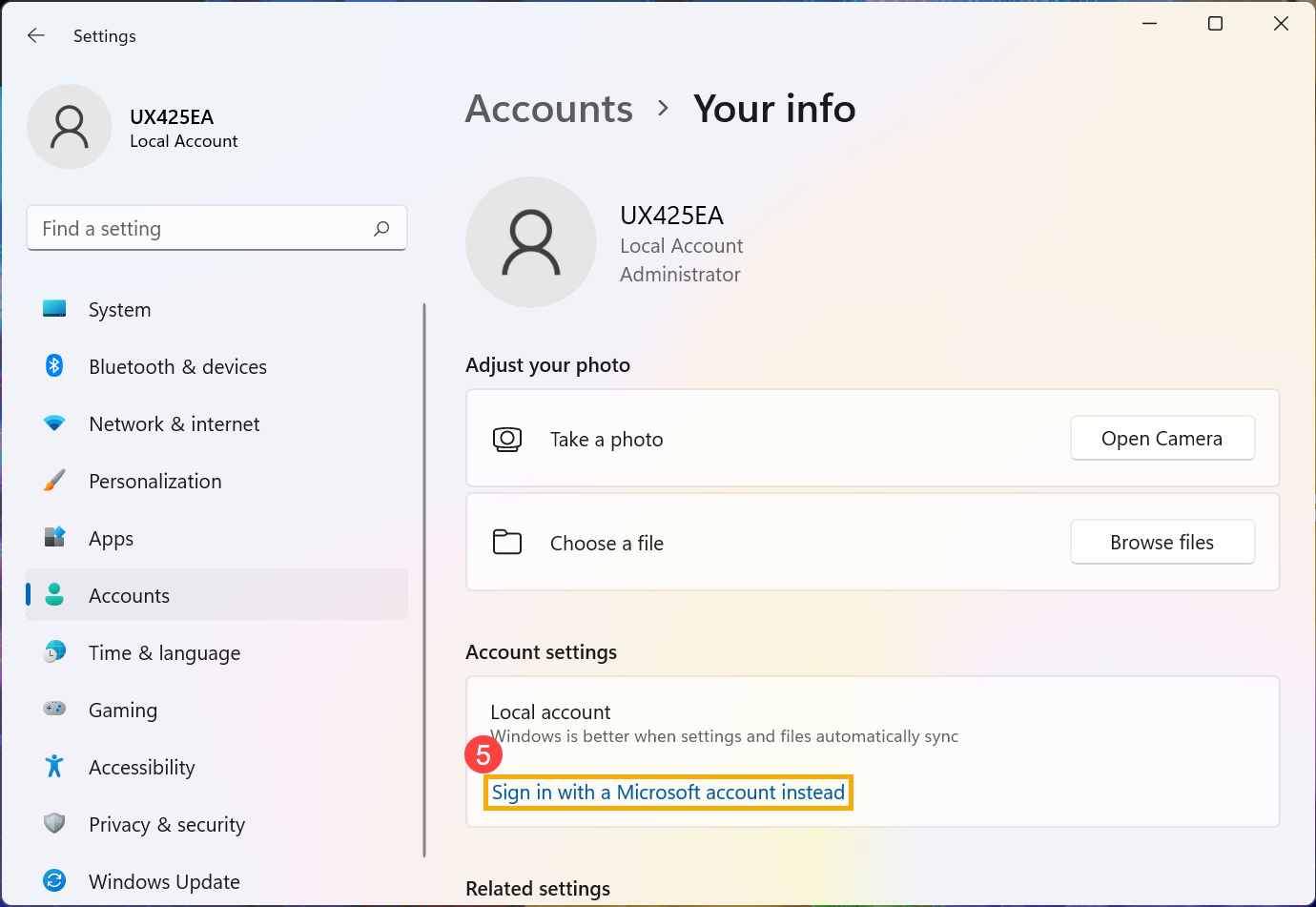
- After you sign in with your Microsoft, Device encryption is finished.
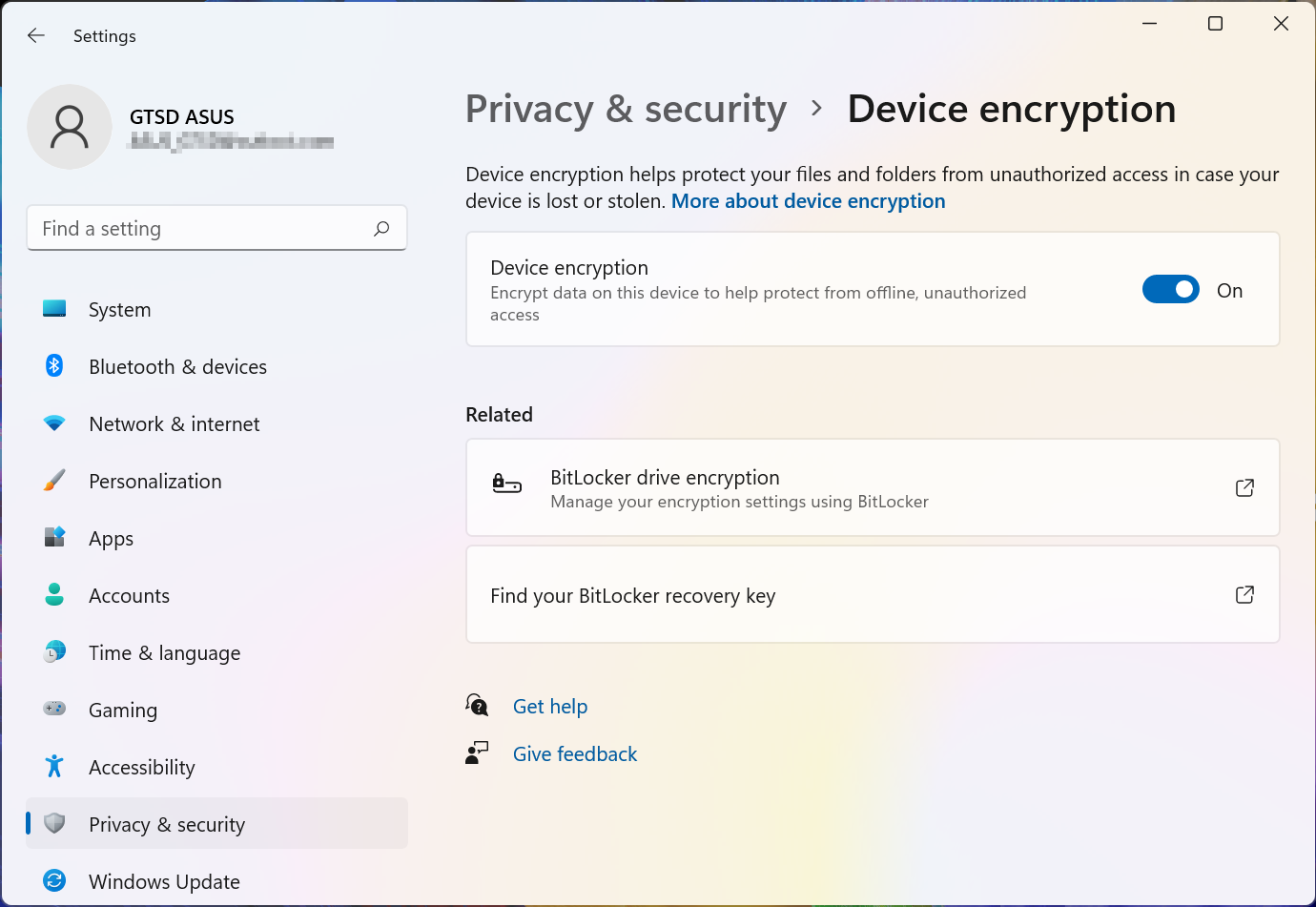
- You can find there is a lock on the drive icon, which means this drive has been encrypted from Device encryption. (The following illustration as an unlocked status.)

- Type and search [Device encryption settings] in the Windows search bar①, then click [Open]②.
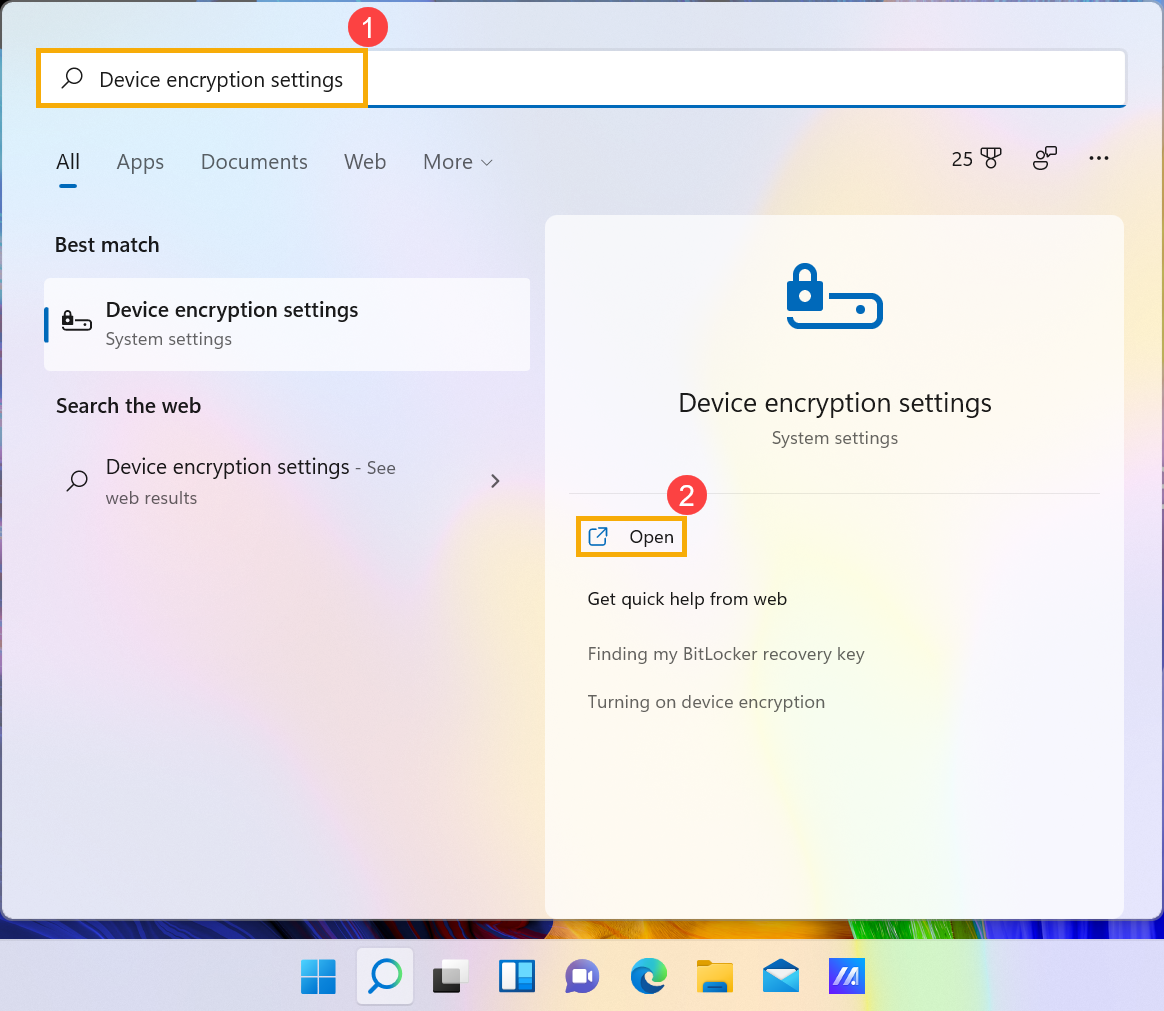
- On the Device encryption field, set the option to [Off]③.
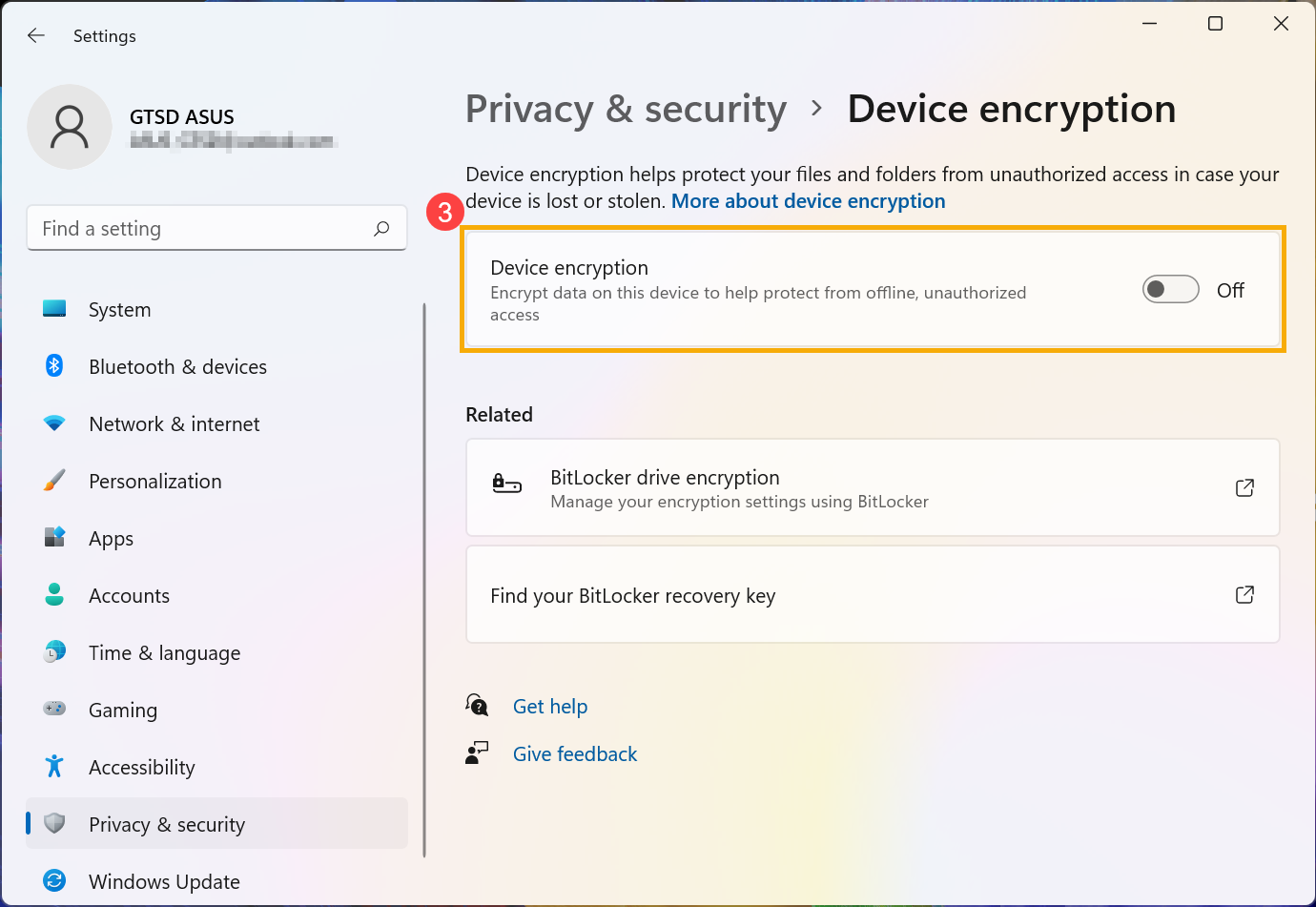
- Confirm whether you need to turn off device encryption, select [Turn off] to disable the device encryption function④.

BitLocker is a built-in function of the device encryption in Windows to protect your data, and the data on your device can only be accessed by people who have been authorized.
Note: BitLocker is not available on Windows 11 Home edition.
- Type and search [Manage BitLocker] in the Windows search bar①, then click [Open]②.

- Click [Turn on BitLocker]③ on the drive that you want to set the device encryption of BitLocker. (The following takes drive D as an example.)

- Select [Use a password to unlock the drive] and type the password you want④, then select [Next]⑤. If you have a smart card, you also can select the smart card option to unlock the drive.
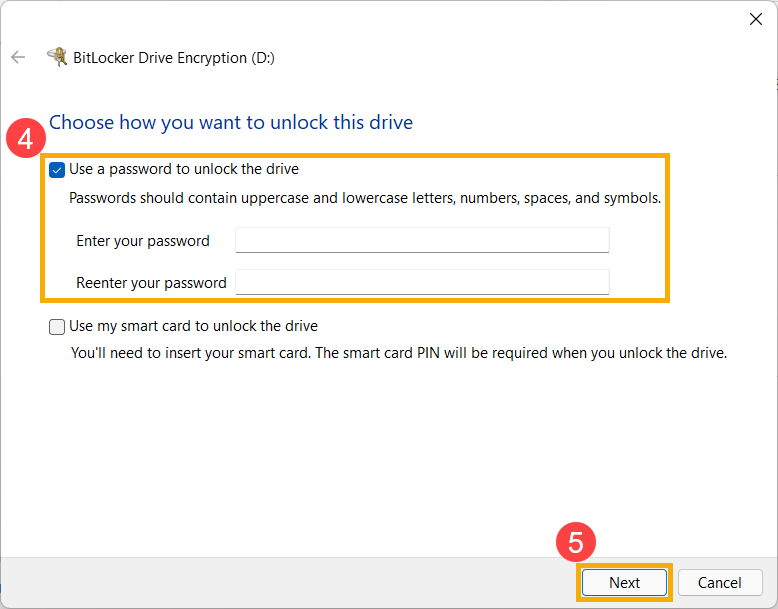
- Select How to back up your recovery key⑥, then select [Next]⑦.
The recovery key is a unique 48-digit numerical password. If you forget your password, you can use your recovery key to access your drive. Or, Windows will require a BitLocker recovery key when it detects an insecure condition, which may be an unauthorized attempt to access the data.
- Select how much disk space of your drive you want to encrypt⑧, then select [Next]⑨.
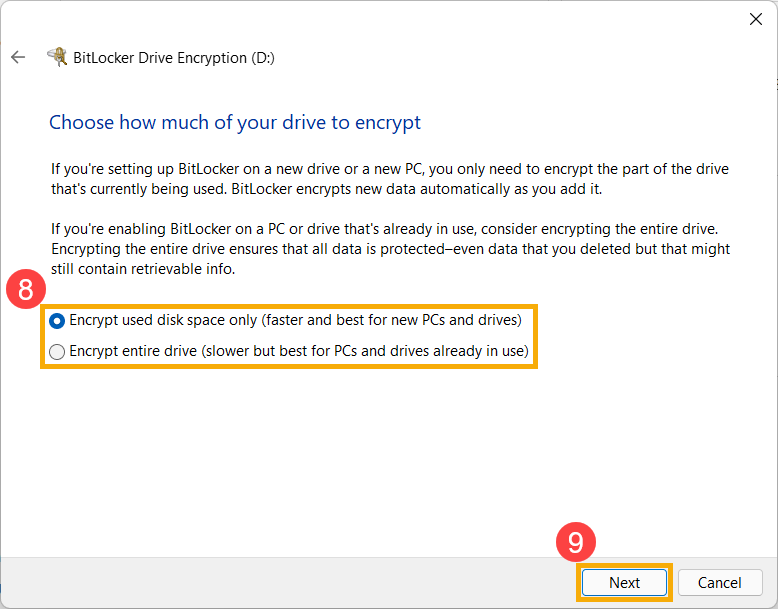
- Select which encryption mode you want to use⑩, then select [Next]⑪.
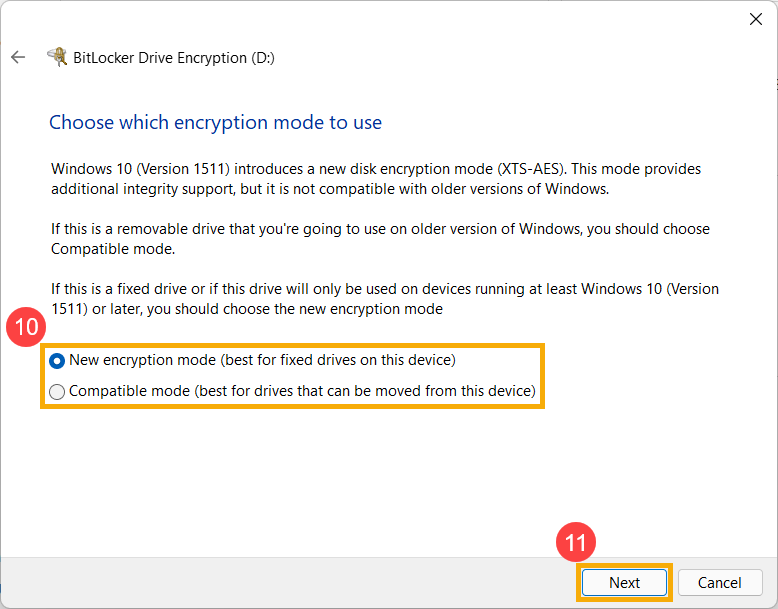
- Confirm the encryption settings are correct, then select [Start encrypting]⑫ to start encrypting your drive.
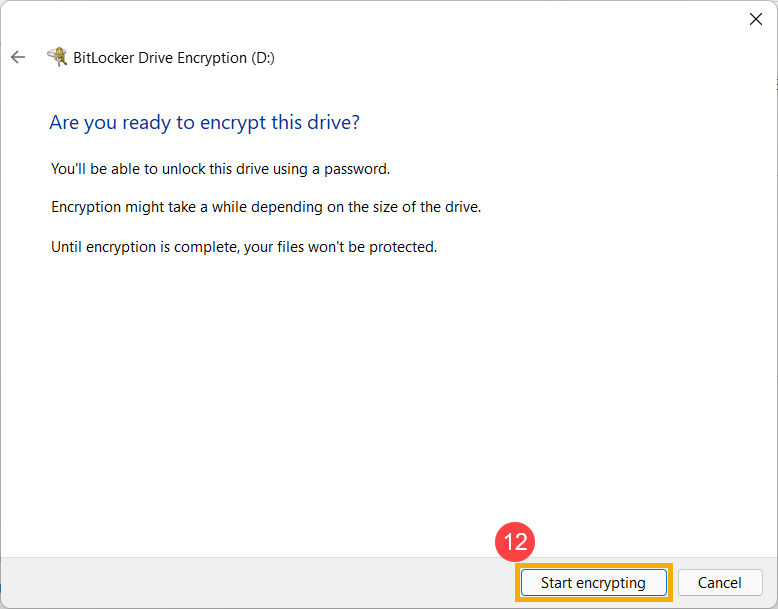
- When the encryption is completed, select [Close]⑬.
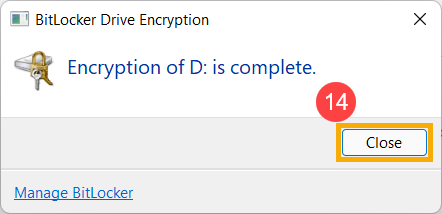
- You can find there is a lock on the drive icon, which means this drive has been encrypted from BitLocker. (The following illustration as an unlocked status.)

If it is a golden lock icon, it means the drive is under locked status, and you need the password to access the data.
Note: While your drive is under unlocked status, it will be automatically locked after the computer restarts.
- Type and search [Manage BitLocker] in the Windows search bar①, then click [Open]②.
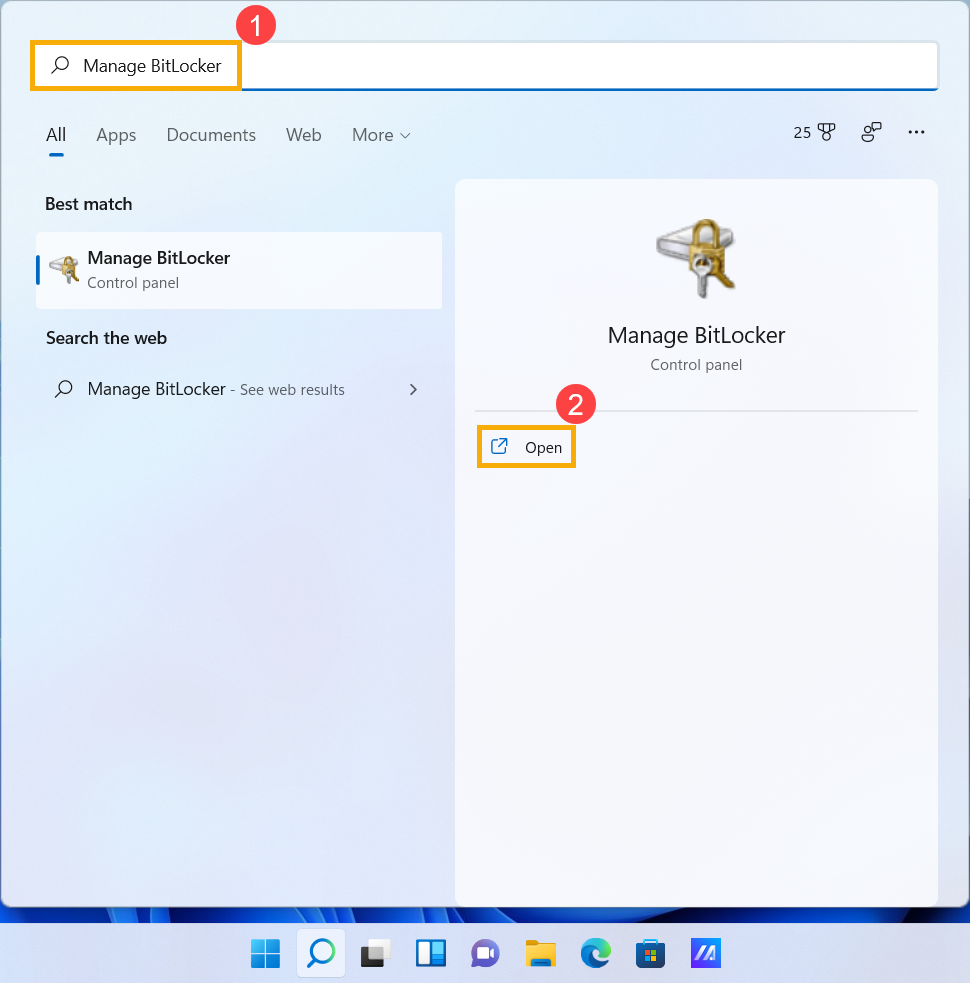
- Click [Turn off BitLocker]③ on the drive that you want to decrypt.
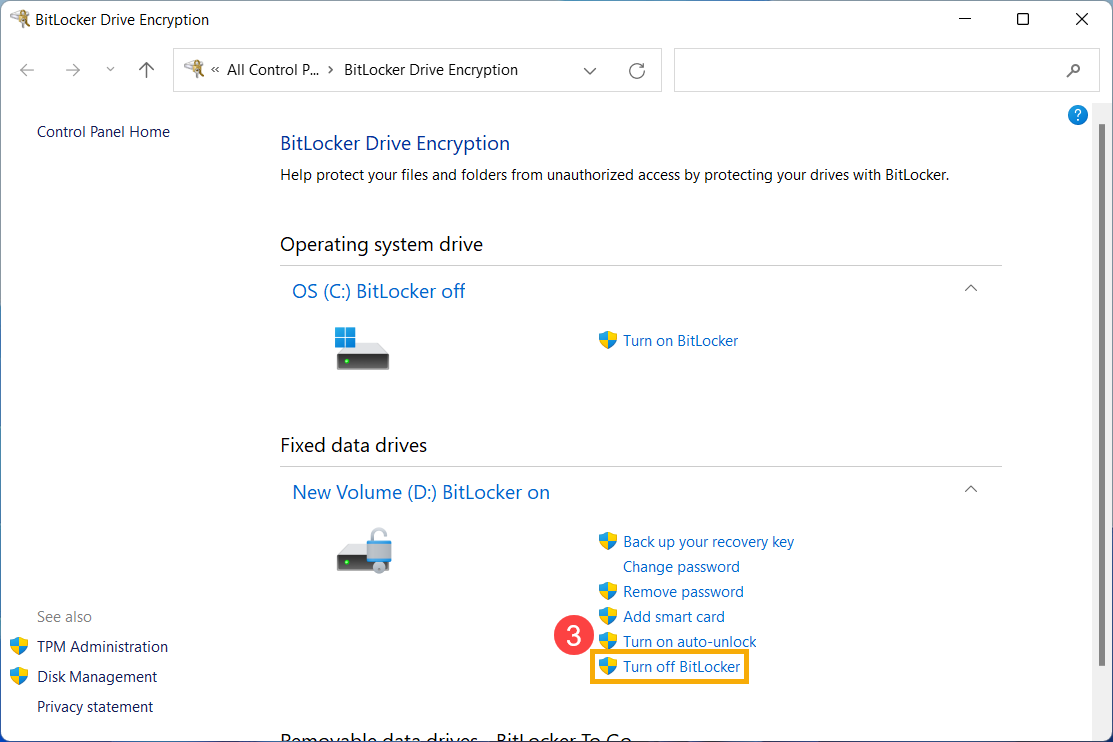
If the drive is under locked status, you need to click [Unlock drive] and type the password to turn off BitLocker.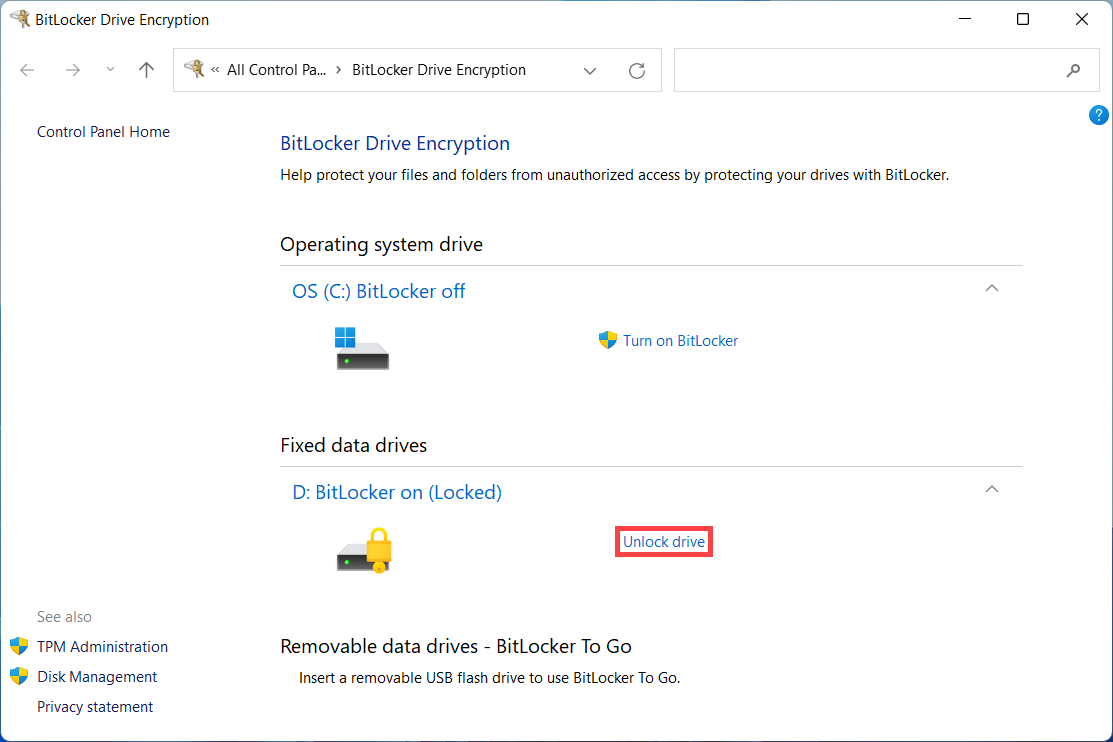
- Confirm whether you want to decrypt your drive, then select [Turn off BitLocker]④ to start turning off BitLocker, and your drive will not be protected anymore.
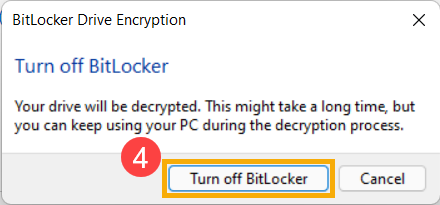
- To see if you can use device encryption
- Turn on device encryption
- Turn off device encryption
- Standard BitLocker encryption
- Turn off BitLocker encryption
To see if you can use device encryption
- Type and search [System Information] in the Windows search bar①, then click [Run as administrator]②.
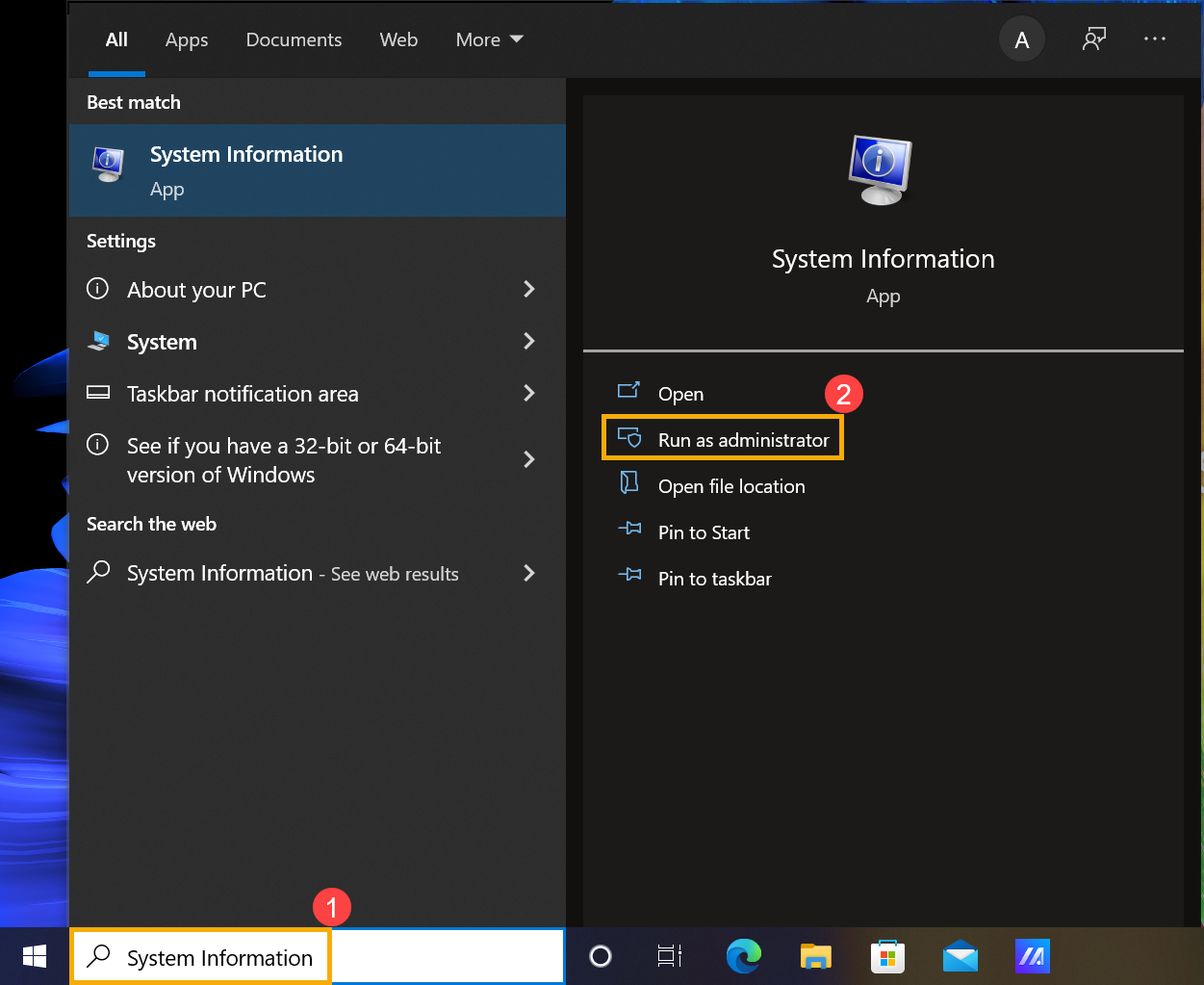
- At the bottom of the System Information window, find [Device Encryption Support]③. If the value says [Meets prerequisites]④, then device encryption is available on your device. If it isn't available, you may be able to use standard BitLocker encryption instead.
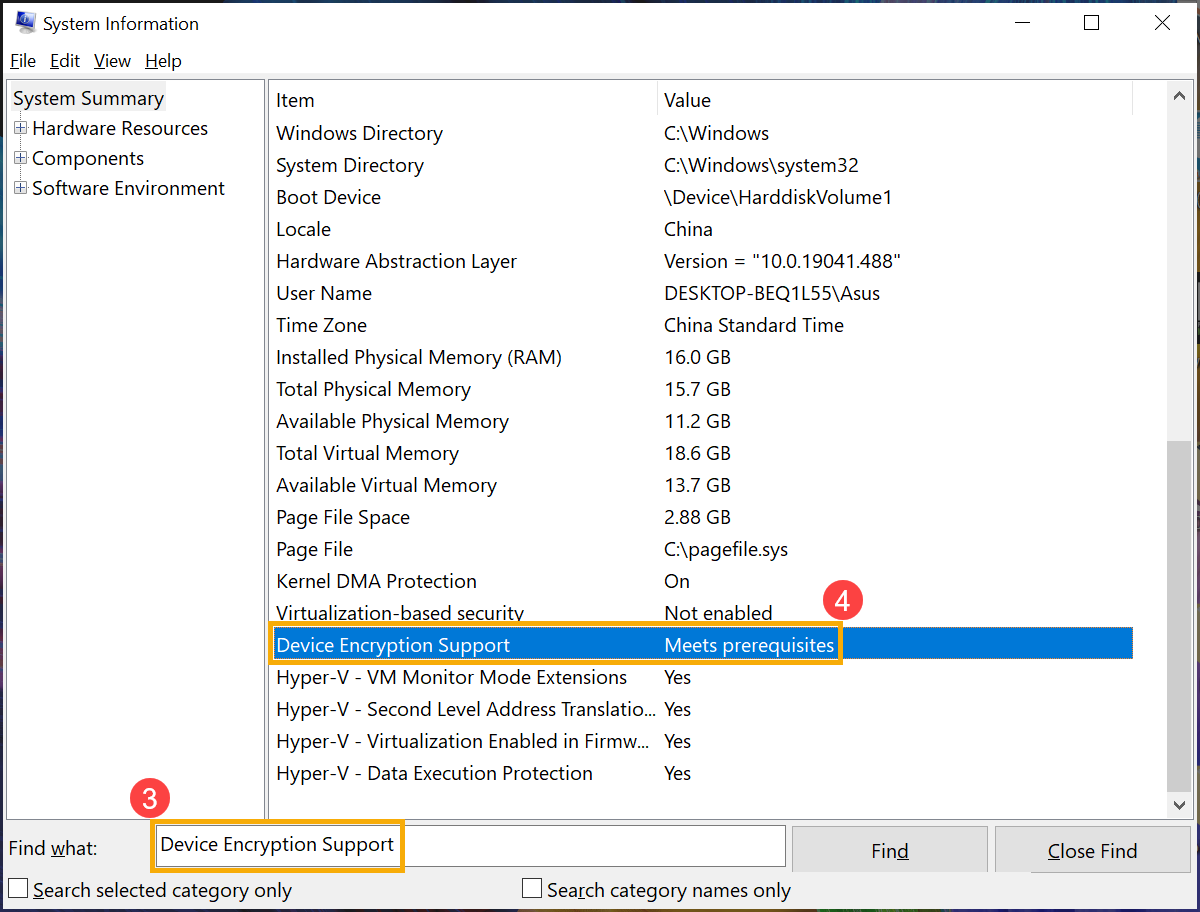
- Type and search [Device encryption settings] in the Windows search bar①, then click [Open]②.
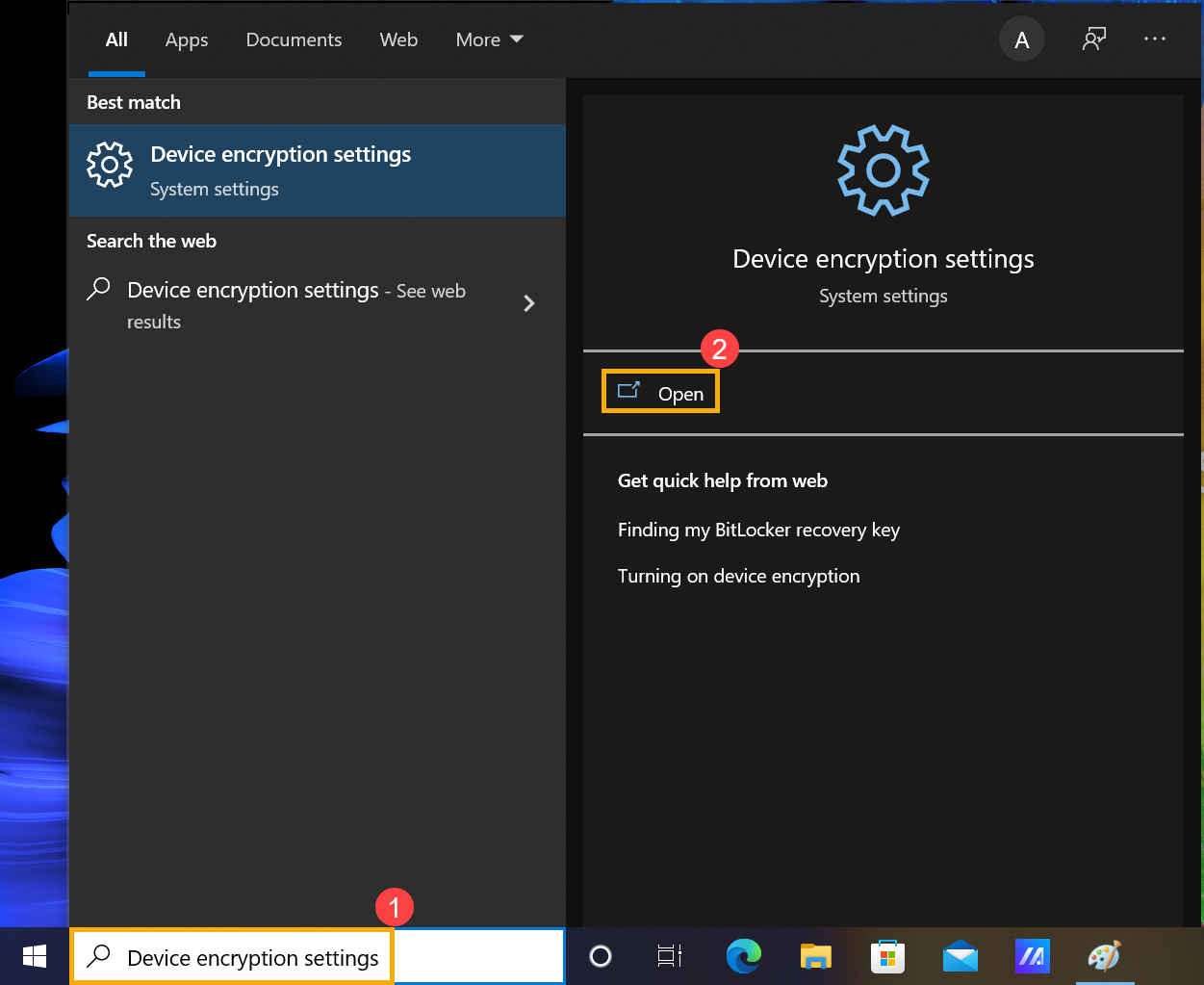
- Some models may turn on the device encryption feature as a default setting. If you have signed in with your Microsoft account, then the device encryption is finished on your device.
If you didn’t sign in with your Microsoft yet, please select [Sign in with a Microsoft account instead]③.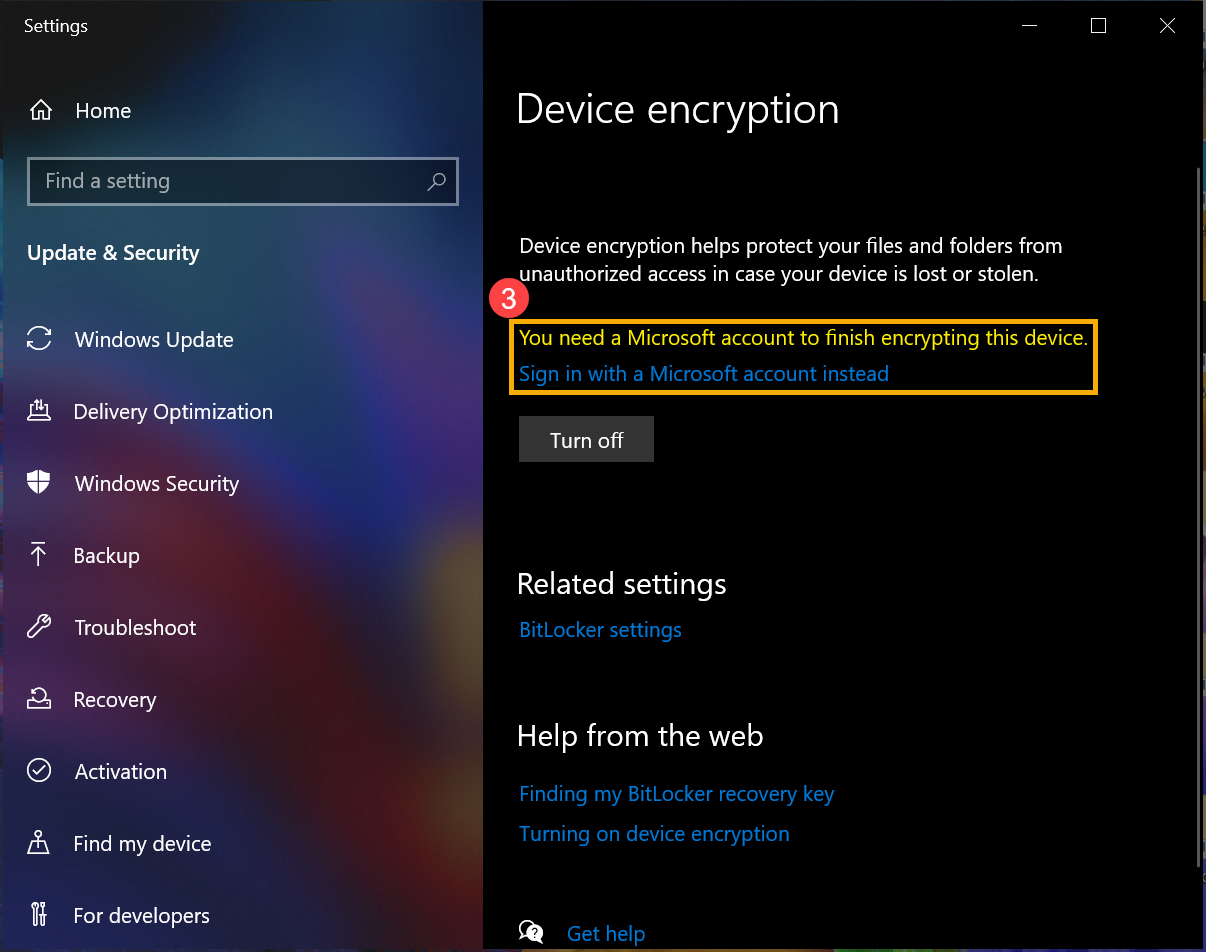
- Enter the Your info setting, please click [Sign in with a Microsoft account instead]④. Here you can learn more about Microsoft account introduction.
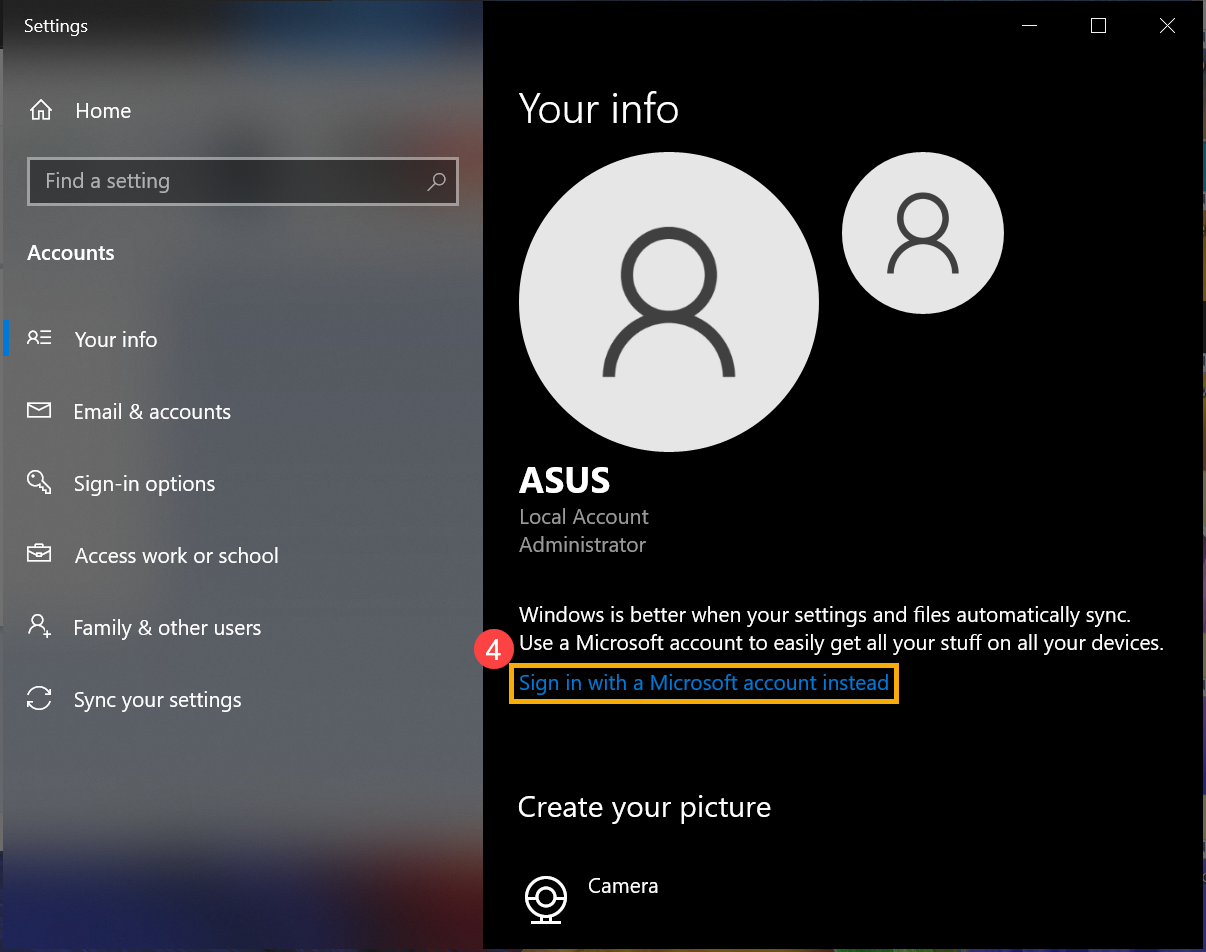
- After you sign in your Microsoft account, Device encryption is finished.

- You can find there is a lock on the drive icon, which means this drive has been encrypted from Device encryption. (The following illustration as an unlocked status.)

- Type and search [Device encryption settings] in the Windows search bar①, then click [Open]②.
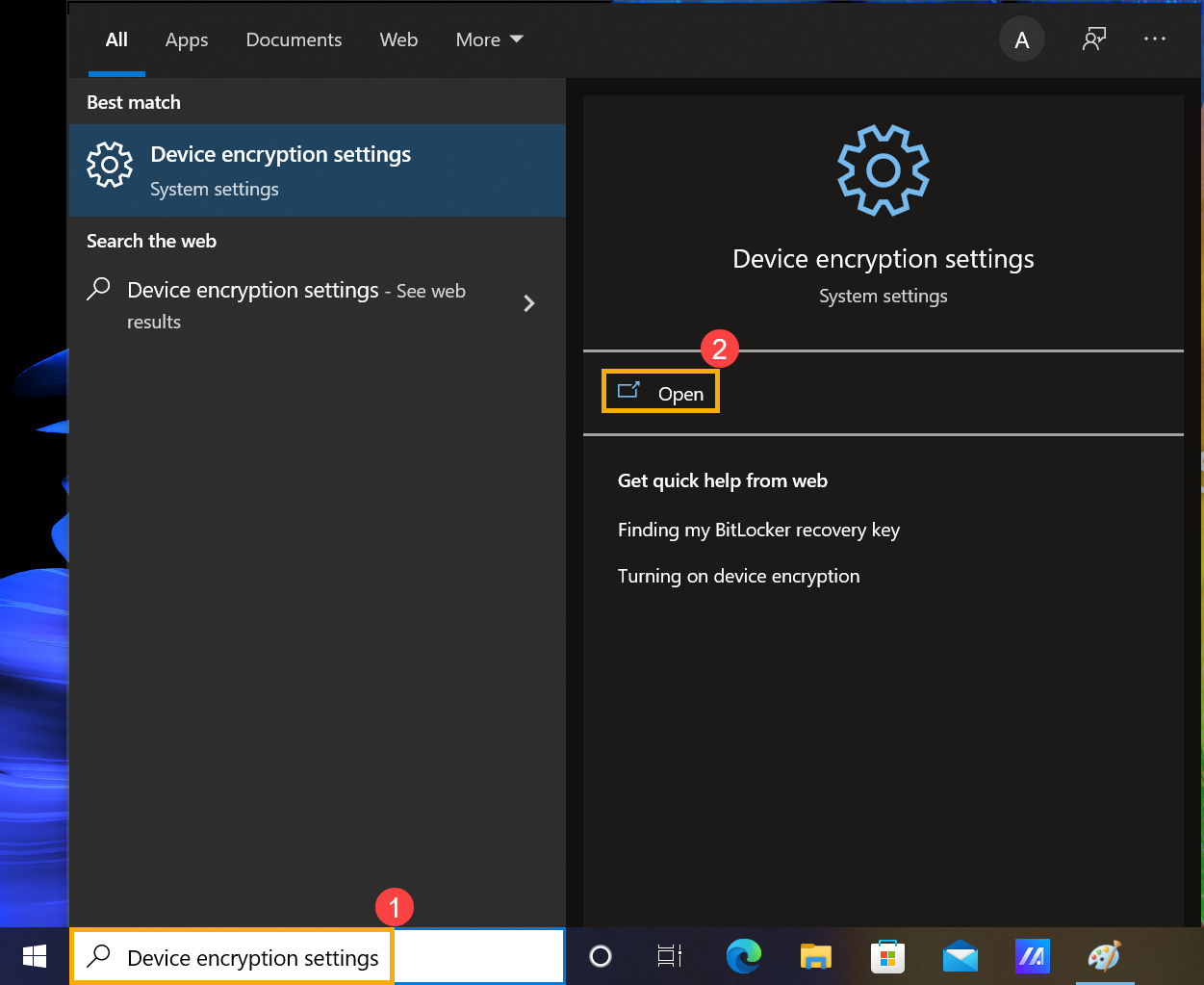
- On the Device encryption field, set the option to [Turn off]③.
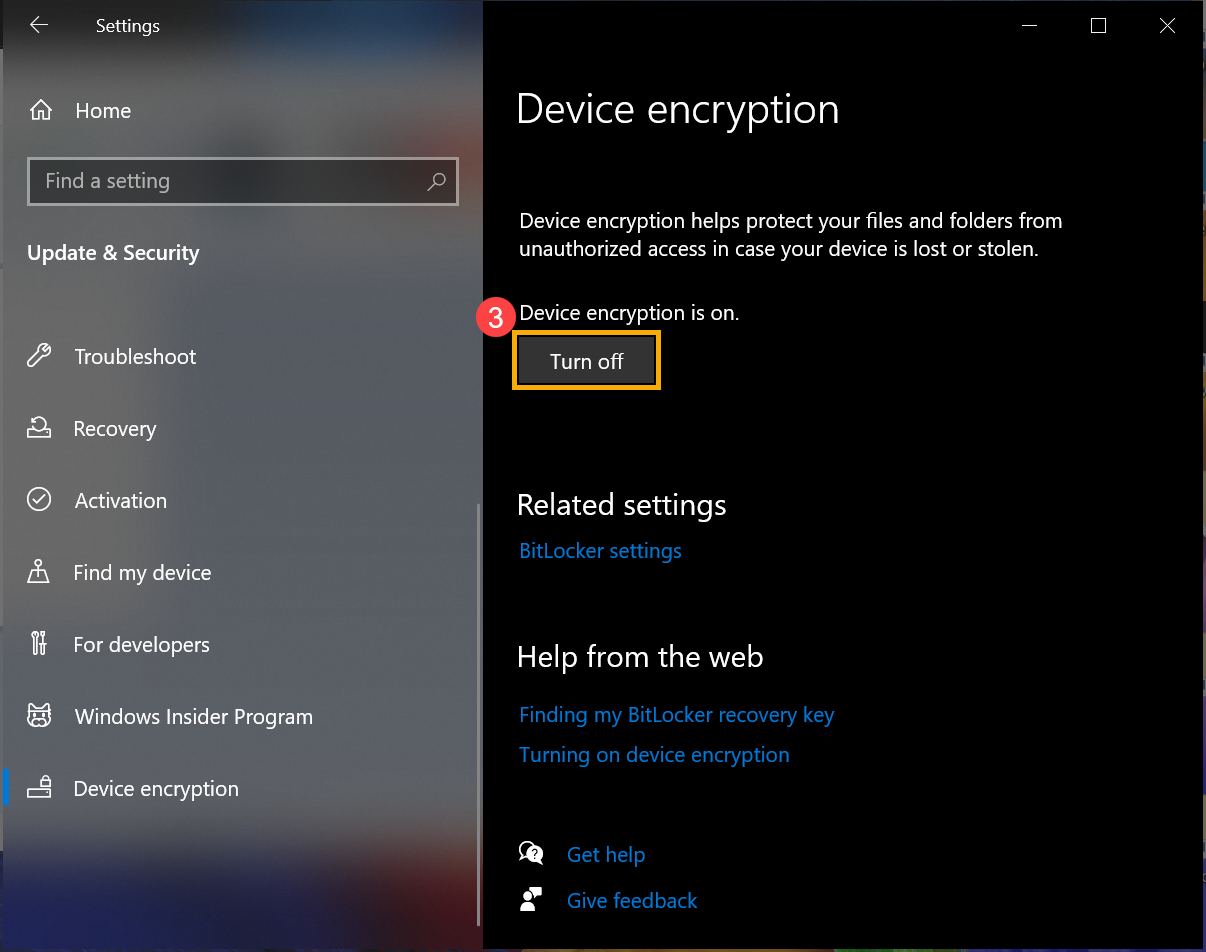
- Confirm whether you need to turn off device encryption, select [Turn off] to disable the device encryption function④.

BitLocker is a built-in function of the device encryption in Windows to protect your data, and the data on your device can only be accessed by people who have been authorized.
Note: BitLocker is not available on Windows 10 Home edition.
- Type and search [Manage BitLocker] in the Windows search bar①, then click [Open]②.
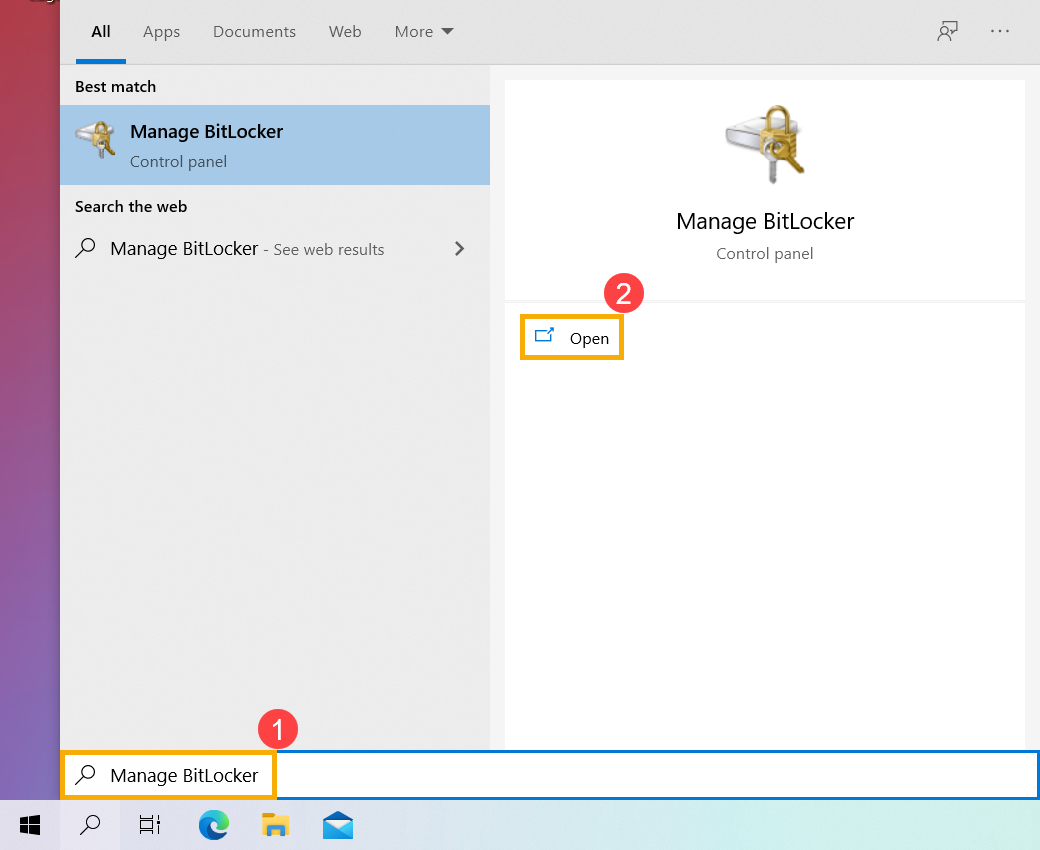
- Click [Turn on BitLocker]③ on the drive that you want to set the device encryption of BitLocker. (The following takes drive D as an example.)
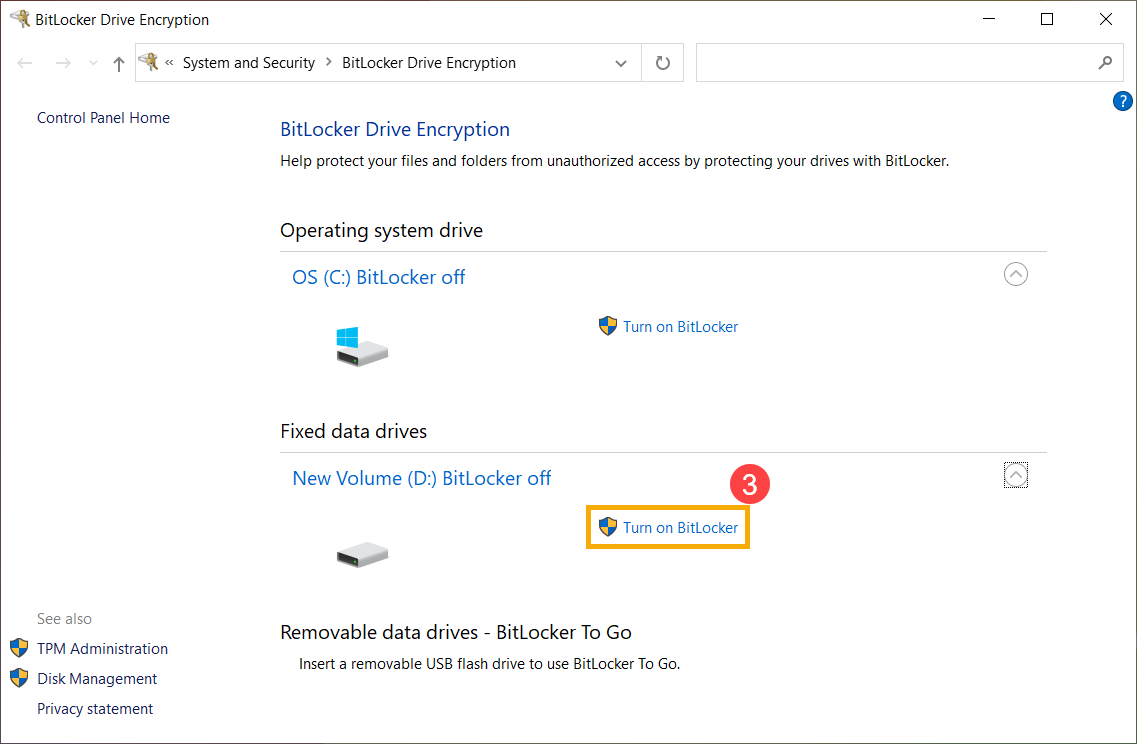
- Select [Use a password to unlock the drive] and type the password you want④, then select [Next]⑤. If you have a smart card, you also can select the smart card option to unlock the drive.
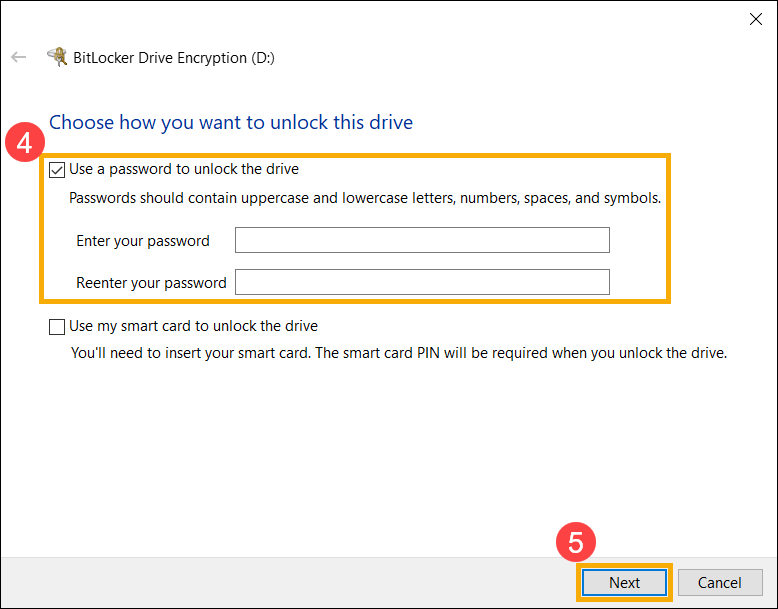
- Select How to back up your recovery key⑥, then select [Next]⑦.
The recovery key is a unique 48-digit numerical password. If you forget your password, you can use your recovery key to access your drive. Or, Windows will require a BitLocker recovery key when it detects an insecure condition that may be an unauthorized attempt to access the data.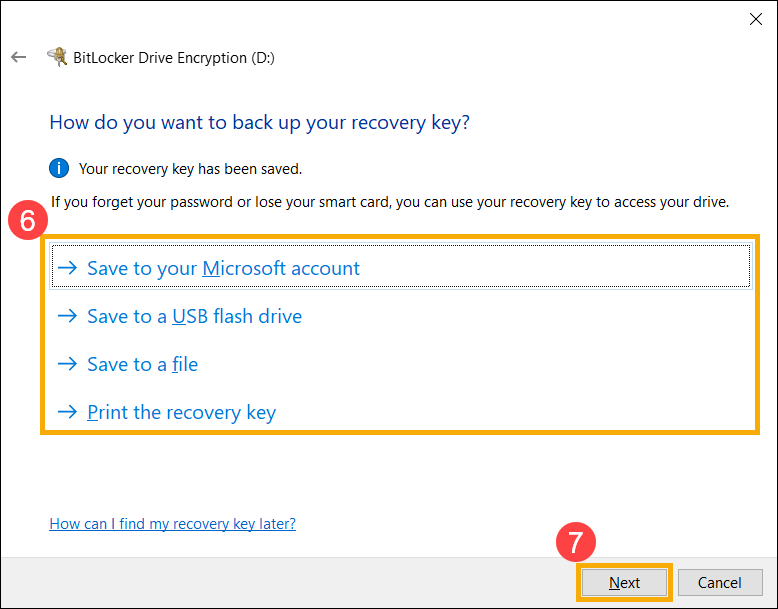
- Select how much disk space of your drive you want to encrypt⑧, then select [Next]⑨.
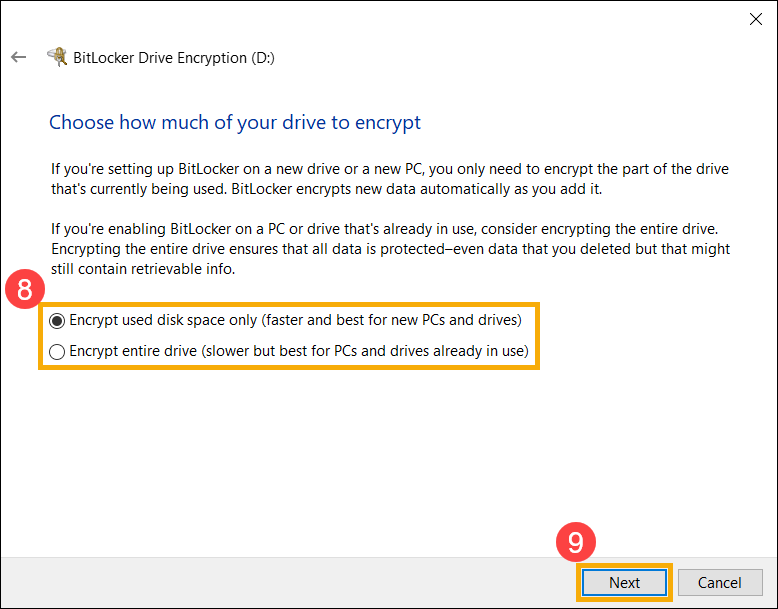
- Select which encryption mode you want to use⑩, then select [Next]⑪.
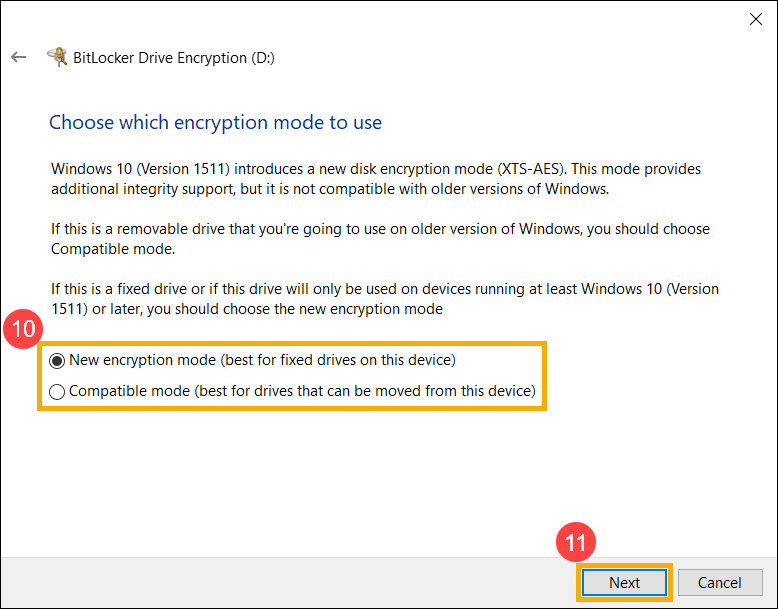
- Confirm the encryption settings are correct, then select [Start encrypting]⑫ to start encrypting your drive.
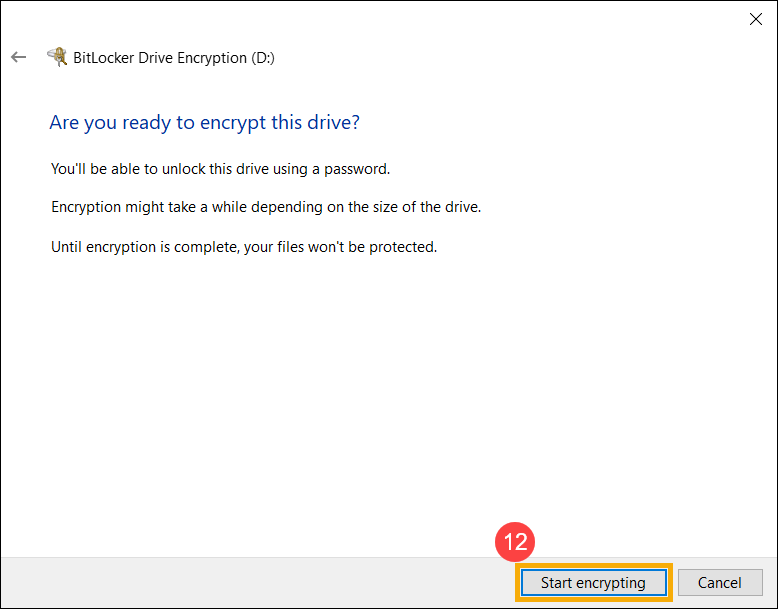
- When the encryption is completed, select [Close]⑬.
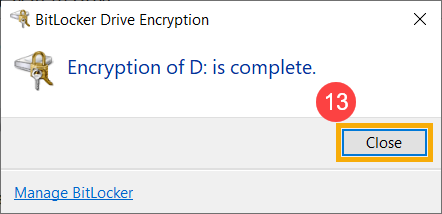
- You can find there is a lock on the drive icon, which means this drive has been encrypted from BitLocker. (The following illustration as an unlocked status.)

If it is a golden lock icon, it means the drive is under locked status, and you need the password to access the data.
Note: While your drive is under unlocked status, it will be automatically locked after the computer restarts.
- Type and search [Manage BitLocker] in the Windows search bar①, then click [Open]②.
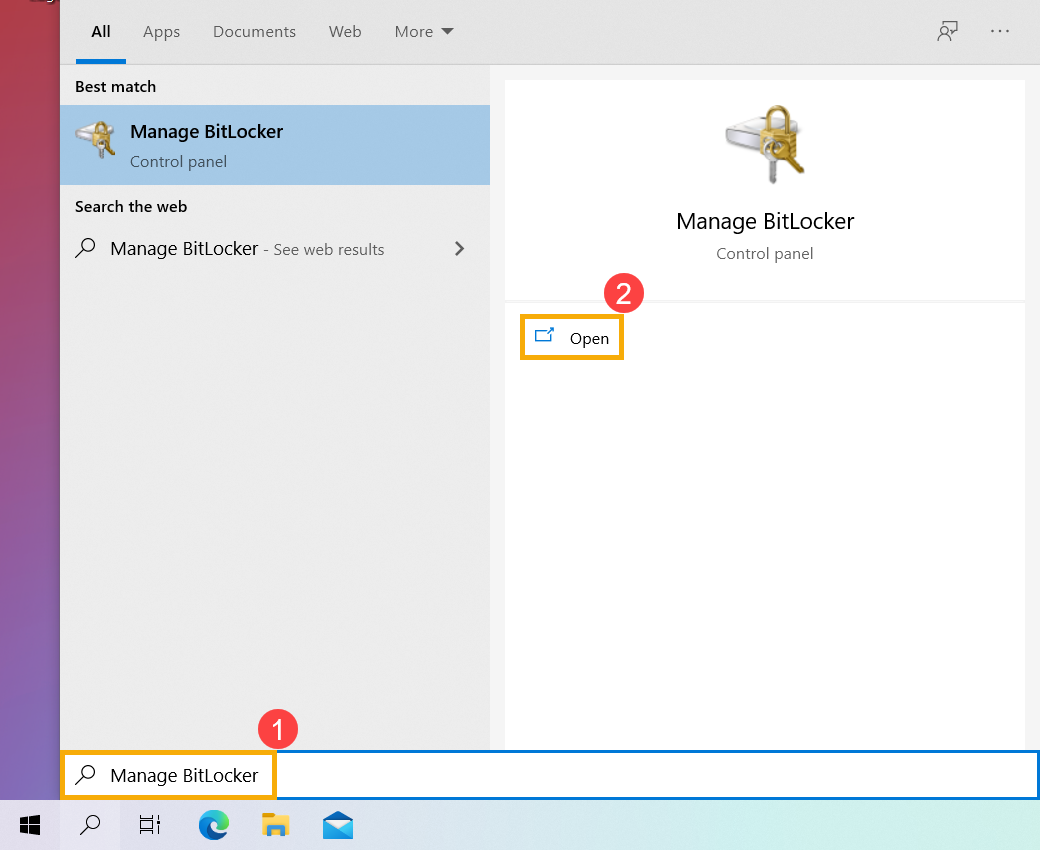
- Click [Turn off BitLocker]③ on the drive that you want to decrypt.
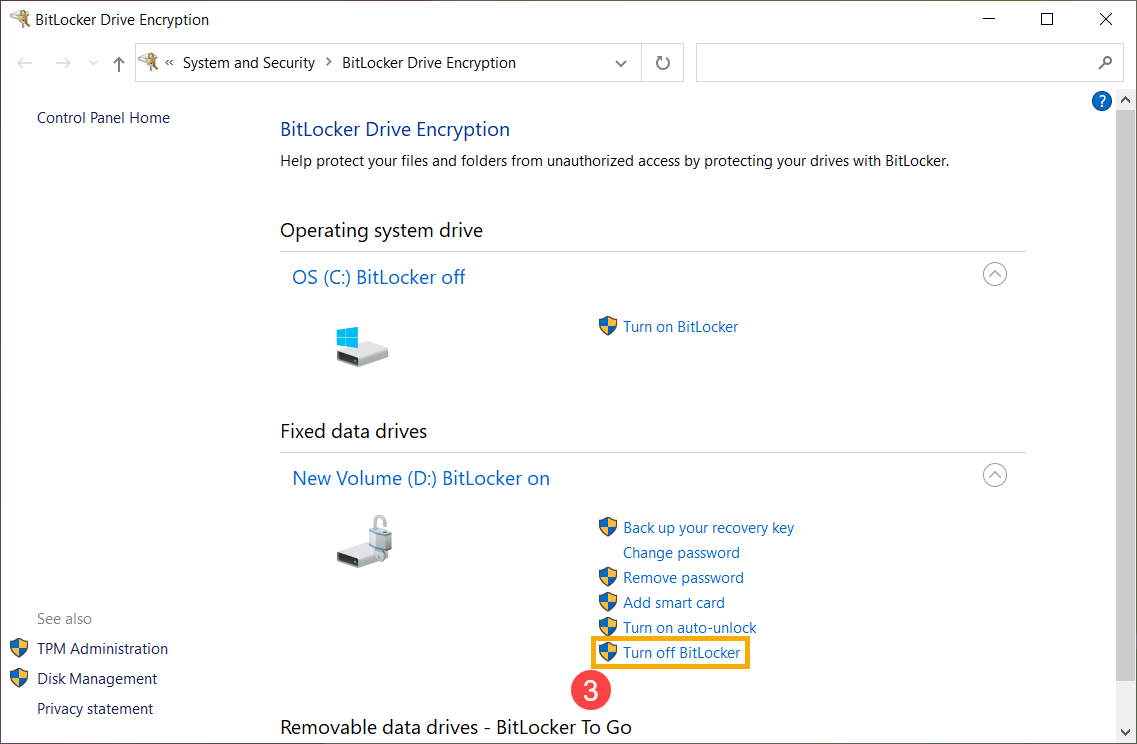
If the drive is under locked status, you need to click [Unlock drive] and type the password to turn off BitLocker.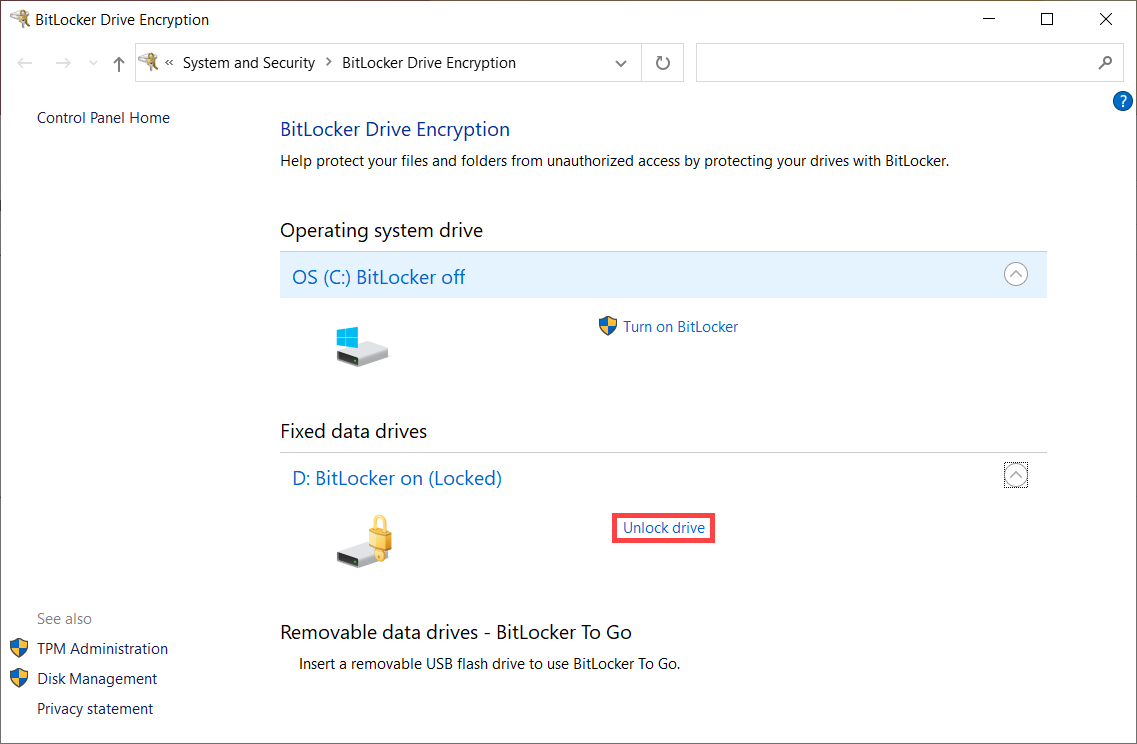
- Confirm whether you want to decrypt your drive, then select [Turn off BitLocker]④ to start turning off BitLocker, and your drive will not be protected anymore.
